ARTIST STATEMENT
ARTWORK AND PROCESS
RESEARCH AND
CRITICAL REFLECTION
CONTEXT
EXTERNAL RESSOURCES
AND PROFESSIONAL SKILLS
CORNELIA PARKER
Cornelia Parker (1956) is a British visual artist who lives and works in London, United Kingdom. She works in a variety of mediums and is best known for her large scale, often site specific, installations.
Her engagement with the fragility of existence and the transformation of matter is exemplified in two key works: Dark Matter, a reconstruction of an exploded army shed, and Heart of Darkness, the formal arrangement of charred remains from a forest fire.
However, I am most interested in Parker’s printmaking and how she transforms everyday object into curious and engaging images by pushing printmaking techniques, such as photopolymer, by exposing glass objects directly on the plates.
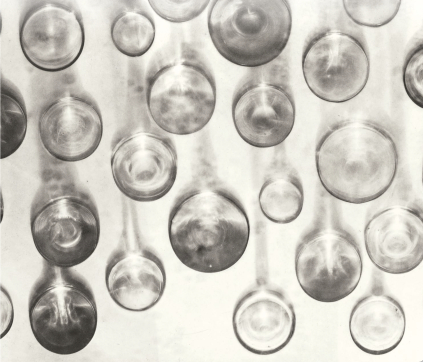
REFERENCE:
- What Do Artists Do All Day?, Cornelia Parker, 00:25 05/06/2013, BBC4, 30 mins. https://learningonscreen.ac.uk/ondemand/index.php/prog/0511075A?bcast=97192616 (Accessed 25 July 2021)
- YouTube (2017) What is an original print? | Life & Arts YouTube.com [Online]. Available at: https://www.youtube.com//watch?v=Dy6Yd75JhOI (Accessed 7 September 2021)
- YouTube (2015) Artist Cornelia Parker Questions the Rules That Govern Us | Brilliant Ideas Ep. 2 YouTube.com [Online]. Available at: www.youtube.com/watch?v=eGtS2oX-Rao (Accessed 7 September 2021)
- Royal Academy (2021) Cornelia Parker RA (b. 1956) royalacademy.org.uk [online] Available at: https://www.royalacademy.org.uk/art-artists/name/cornelia-parker-ra (Accessed 7 September 2021)
- Cristea Roberts Gallery (2021) Cornelia Parker cristearoberts.com [Online]. Available at: https://cristearoberts.com/artists/25-cornelia-parker/ (Accessed 7 September 2021)
TACITA DEAN
Tacita Dean (1965) is a British visual artist who lives and works in Berlin, Germany, and Los Angeles, California. Although trained as a painter, she is best known as a filmmaker.
Time plays an important role in Dean’s work as she has the ability to slow it down, particularly in her 16mm films, where the viewer must pause to consider the work and absorb the stillness.
Also, printmaking has become an essential part of Dean’s artistic practice since she first collaborated with Niels Borch Jensen’s Copenhagen printmaking studio in 2001. I am both intrigued and inspired by the way she uses vintage photographs to compose imaginary landscapes as photogravure works.
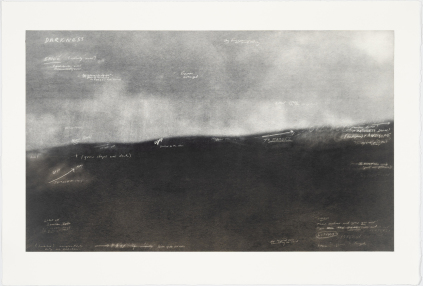
Tacita Dean’s photogravure series Blind Pan © Borch Editions
REFERENCE:
- Imagine … Tacita Dean: Looking to See, 22:30 29/07/2018, BBC1 London, 70 mins. https://learningonscreen.ac.uk/ondemand/index.php/prog/11B9624B?bcast=127185023 (Accessed 25 July 2021)
- Borch Editions (2021) Tacita Dean. borcheditions.com [online] Available at: https://borcheditions.com/artist/tacita-dean/ (Accessed 5 September 2021)
- Griffin, J. (2018) Tacita Dean: “I don’t care about the long run. I care about now.”. RA Magazine [Online]. Available at: https://www.royalacademy.org.uk/article/magazine-tacita-dean (Accessed 5 September 2021)
- Royal Academy (2021) Tacita Dean RA (b. 1965). royalacademy.org.uk [online] Available at: https://www.royalacademy.org.uk/art-artists/name/tacita-dean-ra (Accessed 5 September 2021)
- Tate (2017) Bless our Europe. tate.org [online] Available at: https://www.tate.org.uk/art/artworks/dean-bless-our-europe-t15065 (Accessed 5 September 2021)
- Tate (2021) Bless our Europe. tate.org [online] Available at:https://www.tate.org.uk/art/artists/tacita-dean-2675 (Accessed 5 September 2021
UTA BARTH
Uta Barth (1958) is an American/German contemporary photographer, living and working in Los Angeles. Her early work was a combination of painting and photography, which led to the development of her signature style of blurry photographs.
For Barth, her work is always and foremost about perception. She wants the viewer to let go of what is depicted and instead become immersed and fully invested in their own perception of her work.
I am particularly interested in her Sundial series (2007). Conceived as pictures of light, these photographs trace the effect of light as it shines into her home at different times of the day and at different times of the year. However, these photographs were primarily taken at dusk, which makes them interesting to me in relation to my final work called just that, DUSK.
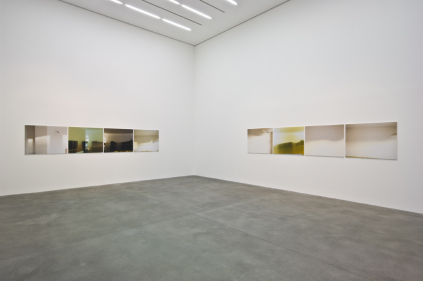
Installation view, Alison Jacques Gallery, London ©Uta Barth
REFERENCE:
- Uta Barth (2021) Sundial 2007 utabarth.net [Online]. Available at: https://utabarth.net/work/sundial/ (Accessed September 2021)
- artnet (2021) Uta Barth | Sundial artnet.com [Online]. Available at: https://www.artnet.com/galleries/tanya-bonakdar-gallery/uta-barth-sundial (Accessed September 2021)
- YouTube (2012) Conceptual Photographer Uta Barth: 2012 MacArthur Fellow | MacArthur Foundation. YouTube.com [Online]. Available at: https://www.youtube.com/watch?v=xxYcpPDq5iQ&t=1s (Accessed Januar 2021)
- artnet (2021) Uta Barth. artnet.com [Online]. Available at: http://www.artnet.com/artists/uta-barth/ (Accessed Januar 2021)
- Tate (2021) Uta Barth. tate.org [Online]. Available at: https://www.tate.org.uk/art/artists/uta-barth-2678 (Accessed Januar 2021)
- MoMA (2021) Art and artist. moma.org [Online]. Available at: https://www.moma.org/artists/7827?=undefined&page=&direction=#works (Accessed Januar 2021)
Japanese Post-War photography and photobooks
Following the decimation and rebuilding of Japanese society after the Second World War, photography played an important part in a new self-definition of Japanese visual style, set apart from Western influences.
The restless generation of photographers that came to the fore took their influences from Europe and America, and combined them with their own deep Japanese cultural sensibility. The results were surreal, modern and utterly unique.
I am particularly interested in the work of Miyako Ishiuchi (1947). Being a woman, she contributes with a more feminine and intimate perspective to the male-dominated world of photography of her era.
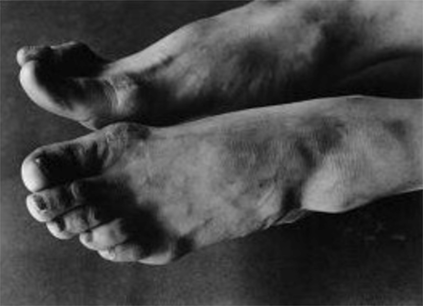
REFERENCE
- Louisiana Channel (2020) Ishiuchi Miyako | Photography Makes History. channel.louisiana.dk [online] Available at: https://channel.louisiana.dk/video/ishiuchi-miyako-photography-makes-history (Accessed 11 September 2021)
- Louisiana Channel (2020) Ishiuchi Miyako | On Mother’s. channel.louisiana.dk [online] Available at: https://channel.louisiana.dk/video/ishiuchi-miyakoon-mothers (Accessed 11 September 2021)
- Tate (2021) Yokosuka Story 1977 tate.org.uk [online] Available at: https://www.tate.org.uk/art/artworks/ishiuchi-yokosuka-story-p80610 (Accessed 11 September 2021)
- Tate (2021) Miyako Ishiuchi – 'Photographs are a Created Reality' | TateShots tate.org.uk [online] Available at: https://www.tate.org.uk/art/artists/miyako-ishiuchi-16875/miyako-ishiuchi-on-post-hiroshima-japan (Accessed 12 September 2021)
- Tate (2021) Provoke Era tate.org.uk [online] Available at: https://https://www.tate.org.uk/art/art-terms/p/provoke-era (Accessed 12 September 2021)
- Tate (2021) Farewell Photography tate.org.uk [online] Available at: https://www.tate.org.uk/art/artworks/moriyama-farewell-photography-p79977 (Accessed 4 September 2021)
- Tate (2021) Artist Daido Moriyama – In Pictures | Tate tate.org.uk [online] Available at: https://www.tate.org.uk/art/artists/daido-moriyama-11595/daido-moriyama-pictures (Accessed 4 September 2021)
- Christie’s (2021) Collecting guide: Japanese post-war photography christies.com [online] Available at: https://www.christies.com/features/An-introduction-to-Japanese-post-war-photography-10341-1.aspx (Accessed 7 September 2021)
- Photoworks (2021) Japanese Photobooks of the 1960s and 70s photoworks.org.uk [online] Available at: https://photoworks.org.uk/japanese-photobooks-1960s-70s/ (Accessed 12 September 2021)
- Gouga Books (2021) Japanese Photobooks of the 1960s & '70s goliga.com [online] Available at: https://goliga.com/japanese-photobooks-of-the-1960s-and-70s (Accessed 7 September 2021)
A Philosophy of Emptiness
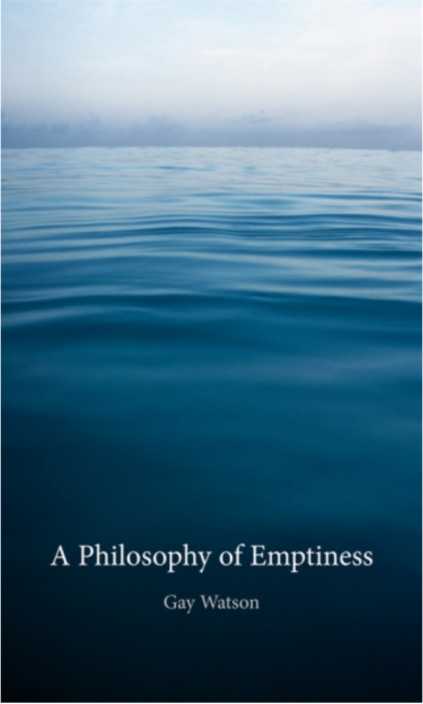
Gay Watson has a PhD in Religious Studies from the School of Oriental and African Studies at the University of London. She trained as a psychotherapist with the Karuna Institute in Core Process, a Buddhist inspired psychotherapy.
In her book Watson describes the philosophy of emptiness in a historical context from Buddhism, Taoism and religious mysticism to the contemporary world of philosophy, science and art practice.
I am particularly interested in her theories about emptiness in the visual arts, where she describes how the progressive loss of the object and breaking down of the perspective, question the value of the artis’s unique subjectivity and instead place meaning in the experience by the viewer’s encounter with the work.
References:
- Provider: ProQuest Ebook Central. Watson, G (2014), A Philosophy of Emptiness, Reaktion Books, Limited, London. Available from: ProQuest Ebook Central. (Acessed 4 April 2021)
- Reaktion Books (2021) A Philosophy of Emptiness. reaktionbooks.co.uk. (2021) [Online]. Available at: http://www.reaktionbooks.co.uk/display.asp?ISB=9781780232850 (Accessed 25 April 2021)
- YouTube (2015) Gay Watson on a Philosophy of Emptiness. youtube.com [Online]. Available at: YouTube.com/watch?v=Q4fPymufvEs&t=32s (Accessed25 April 2021)
The Last of the Light
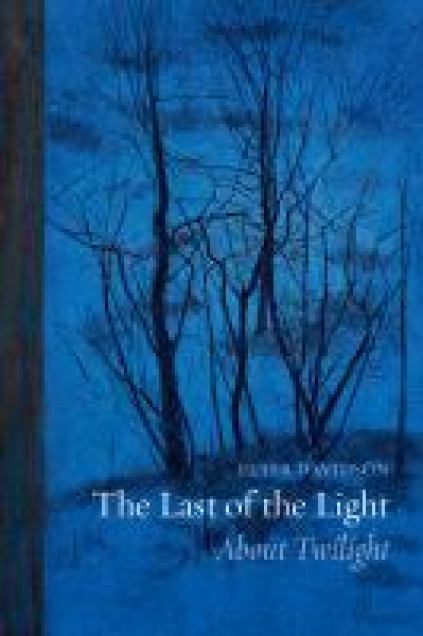
‘The Last of the Light’ is both a celebration of and inquiry into the significance of temperature and skies, especially at this time of year, when we are in the twilight of the seasons.
In chapters such as ‘English Melancholy’, ‘Cities of the Evening’ and ‘About Shadows and Gardens’, Davidson shows how the last desperate holding of the light that marks autumn might be both an aesthetic theme – a way of looking at an array of paintings and poetry and music.
I am particularly interested in the chapter ‘Cities of the Evening’ especiallt the passage in Peter Davidsons book ‘The Last of the Lights’ where he describes Vilhelm Hammershøi’s (1864-1916) paintings, especially the way he elaborates on descriptions of the northern twilight and how it's light evokes melancholy and silence in the dusk.
REFERENCE
- Davidson, P. (2016) The Last of the Light, London: Reaction Books Ltd